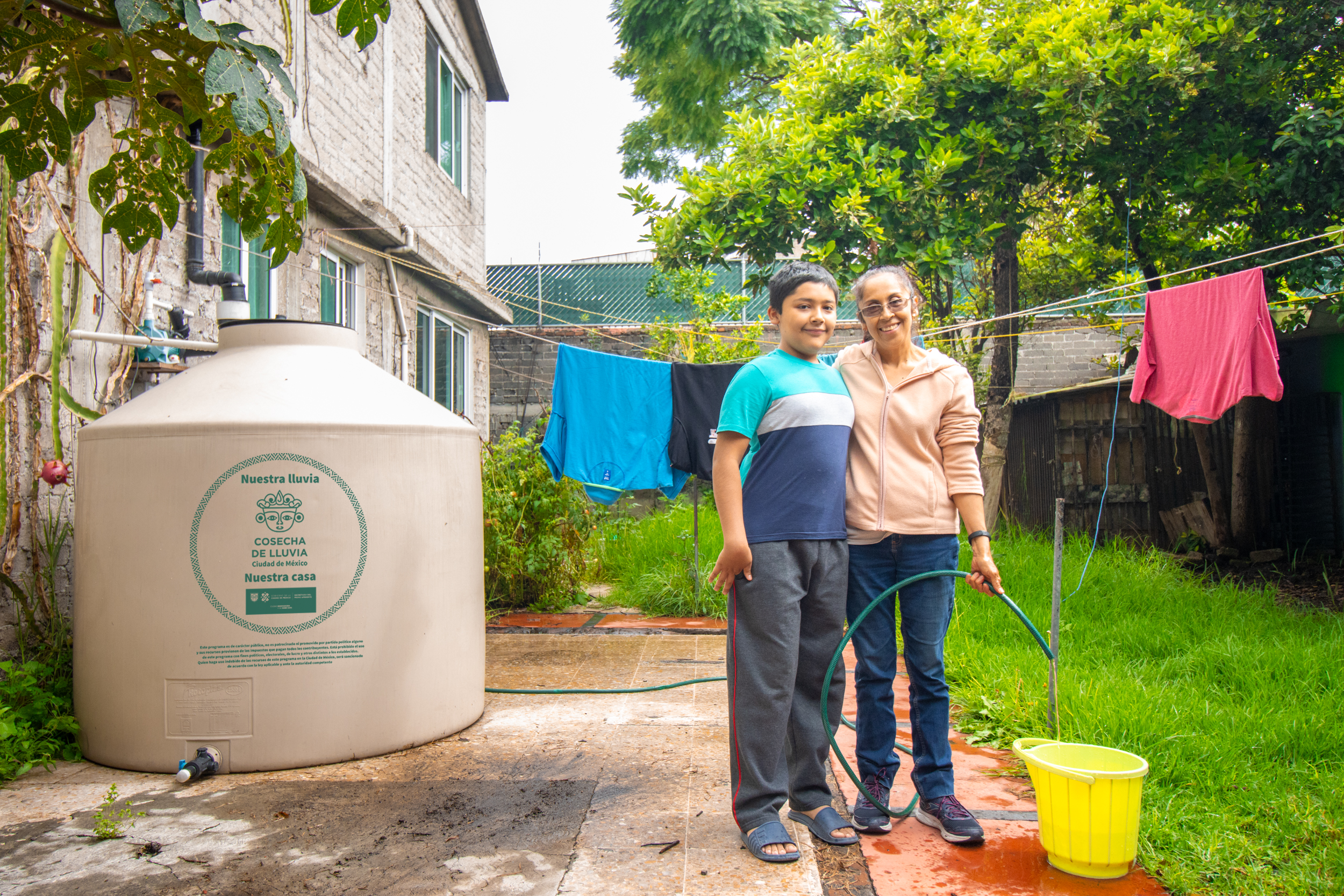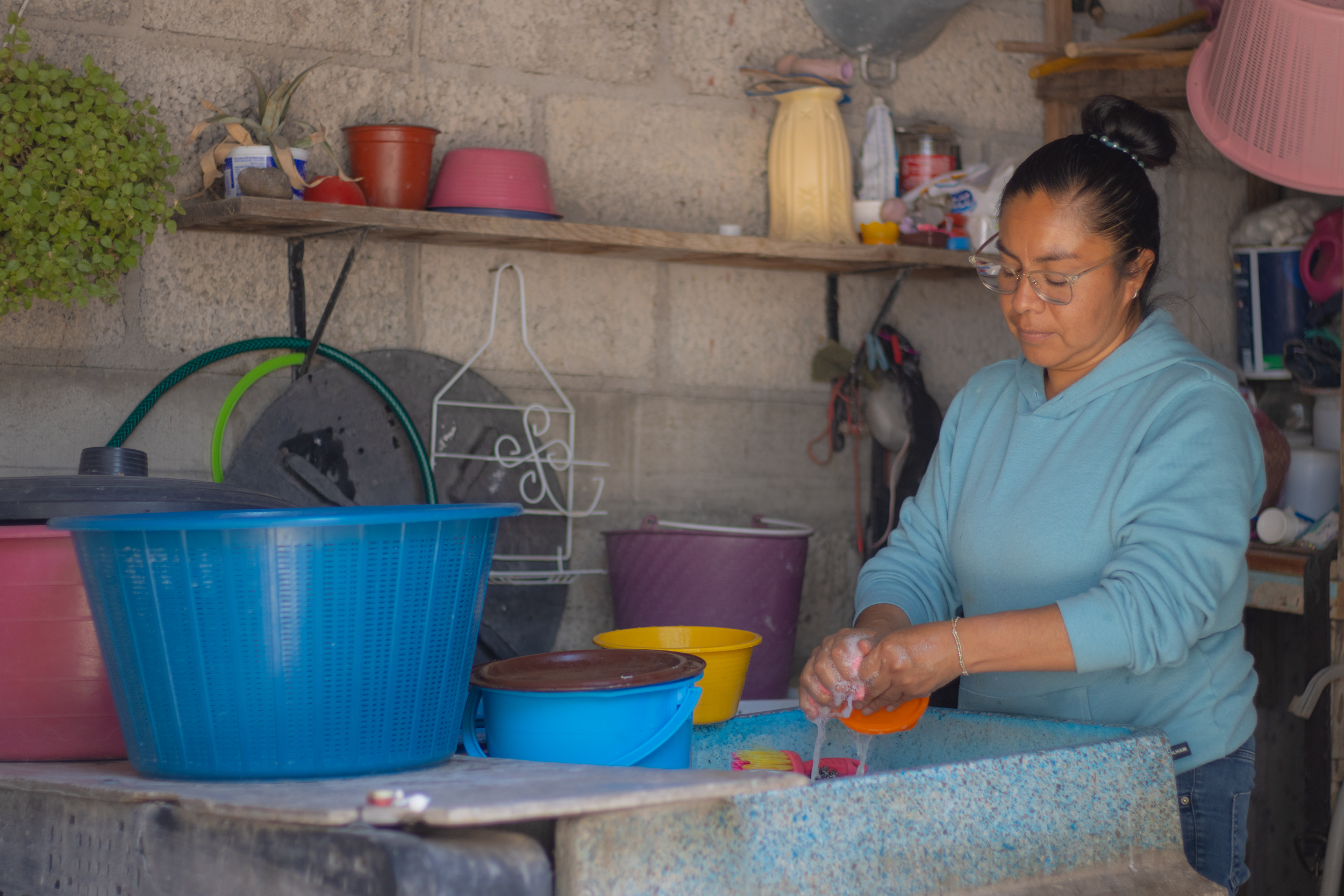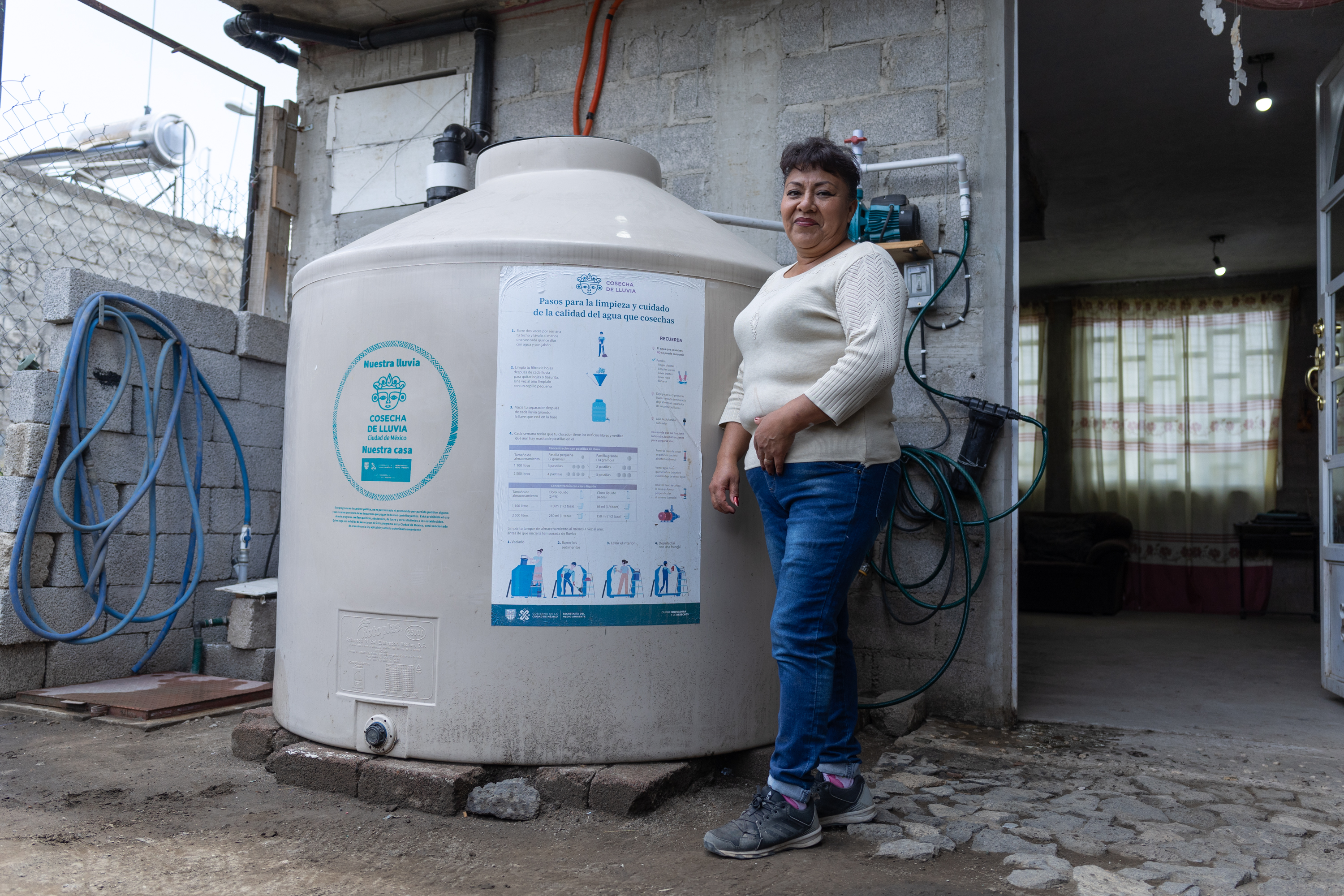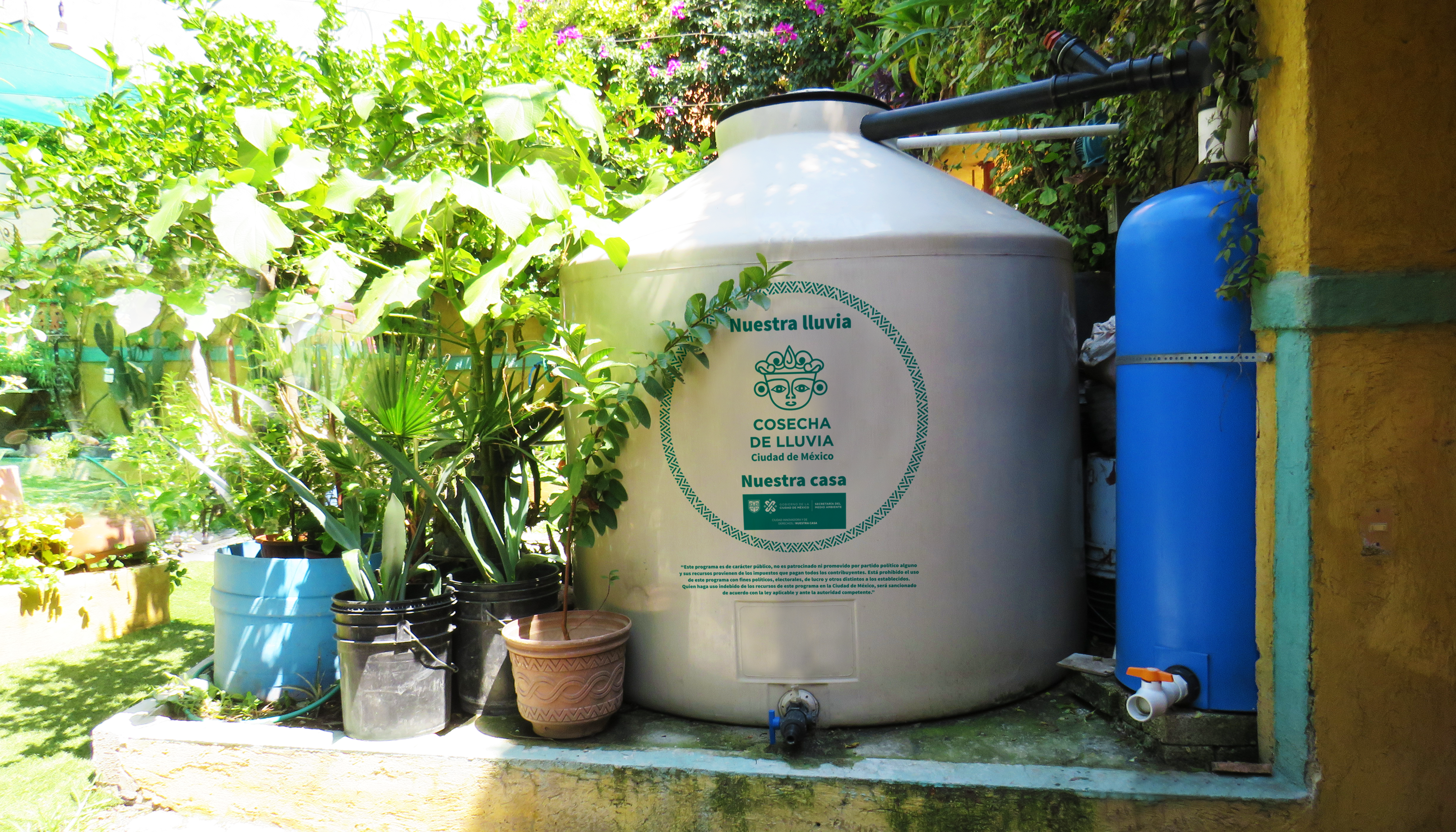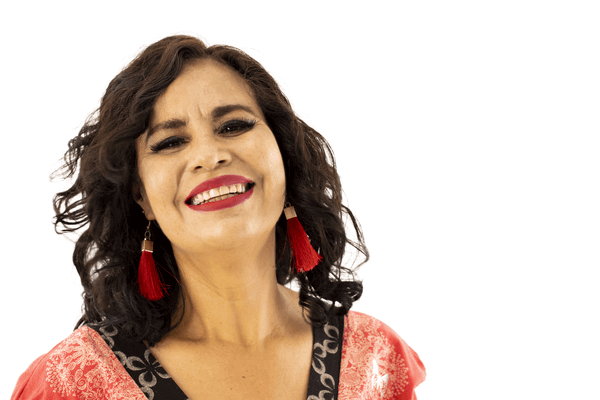Status
ongoing
50%
City
Mexico City
Main actors
City Government
Project area
Inner City
Duration
Ongoing since 2019
The program "Cosecha de Lluvia" commenced in 2019 with the ambitious aim of installing 10,000 rainwater harvesting systems annually. In 2022, the program doubled its annual budget and installed 20,000 systems. By October 2023, a total of 62,700 systems had been set up, making the city the global leader in the number of rainwater harvesting installations.
City
Mexico City, Mexico
Size and population development
The population of Mexico City was recorded at approximately 8.9 million in 2015. The Greater City of Mexico recorded a population of approximately 21.6 million in 2018 and is expected to reach in excess of 23 million by 2030 according to the UN populations forecast. The City has great inequalities, with areas of affluence and conspicuous consumption existing nearby areas plagued with water born gastrointestinal infections, while air pollution affects all inhabitants of the valley City, with respiratory illnesses being a major issue.
Population composition
Of the millions who call Mexico City home, a significant amount of them belong to Mexico’s many indigenous peoples, including Nahuatl, Otomi, Mixtec, Zapotec and Mazahau. Additionally, the city is home to many expatriates and immigrants, largely from the Americans, North, Central and South, as well as the Caribbean. The average age is of 33 years.
Main functions
Mexico City is the oldest capital city in the American continent and one of the most economically active centres. The city extends across 607.22 square kilometres and is located in the Valley of Mexico at an altitude of 2,240 meters above sea level. It houses many of the country’s most prestigious cultural and educational centres, including universities such as UNAM and IPN, as well as theatres, libraries, operas, stadiums and auditoriums. The city also boasts many archaeological sites and museums that expose the pre-Hispanic heritage of the city, over which the Spanish conquerors imposed their new capital. Other sites of touristic and religious importance, like the main Cathedral at the Zócalo plaza (where the National and local governments are located), are examples of the Baroque and Neoclassical architecture styles that marked the city.
Main industries / business
Mexico City is undoubtedly the economic centre of the country, contributing 17 percent of the national GDP. Tertiary sector industries (services) comprehend almost 90 percent of the annual GDP, with the city excelling in the commercial and financial sectors (Mexico City houses the headquarters of most of the banks in the country, as well as the Mexican Stock Exchange). Other main industries include media companies, transport (privatized airlines and bus companies), and government activities.
Sources for city budget
Drawn from a progressive income tax, Mexico City’s budget is decided by the local Legislative Assembly, and the ceiling of public debt agreed upon by the Chamber of the Union, the legislative power of the Federal Government.
Political structure
Until the year of 2016, Mexico City was a Federal District, and one of the thirty-two entities into which the country is divided. In its search for autonomy from the ruling of Federal government over local situations, the city promoted changes in the national constitution that have altered its status and name since the year 2016. Now, Mexico City has become an autonomous entity with its own political constitution. The main differences from its previous status has to do with modifications in governance: the city now has 16 mayoralties belonging to each of the sixteen boroughs; and the Legislative Assembly was transformed into a Local Council with the same inherence in Federal decisions as every other state in the country. The City’s head is elected by popular vote and is charged with choosing the chief of police and the Attorney General, a task previously carried out by the President of the Republic.
Administrative structure
Mexico City is divided into 16 delegaciones, or boroughs, for administrative purposes. The boroughs are not equivalent to municipalities, yet they possess administrative structures comparable to these. In each borough, the mayors are tasked with ensuring that the necessary utilities and services are provided. The poorer boroughs are in constant struggle due to the lack of potable water, dignified housing, and medical services. The boroughs must answer to the head of government who represents its executive branch, and local councils must approval their budgets.
Website
https://www.cdmx.gob.mx/
Mexico City's water system caters to a population of 9.2 million residents and an additional 4.2 million transient individuals. Shockingly, 32% of this population lacks sufficient water for basic necessities. One contributing factor is that over 50% of the city water must be pumped from external sources, using approximately 570 million kWh of energy and producing a carbon footprint of 1.16 million tCO2e annually.
Furthermore, the city currently extracts twice the amount of water that naturally replenishes, leading to an overexploitation of the aquifer by 25m3. This over-extraction threatens the city with an impending “Day 0” scenario in the foreseeable future. Climate change exacerbates this situation, as projections indicate a decreased volume of available water for Mexico City.
On a positive note, estimations show that the city has the potential to capture between 442.85 thousand m3 and 1,444.36 thousand m3 of rainwater annually. This volume represents 43.87% to 143.10% of the city’s total water consumption.
In response to these challenges, the Mexico City Government has prioritized scaling up rainwater harvesting. This strategy not only creates sustainable water sources but also bolsters the city adaptability to climate change impacts, especially for the most vulnerable residents. Rainwater harvesting systems offer households water autonomy during the rainy season, enabling them to capitalize on the 744 million cubic meters of rainfall the city receives annually.
The Rainwater Harvesting program focuses on improving water access in areas grappling with economic challenges and water shortages by equipping homes with rainwater harvesting systems.
Training is crucial: once a system is in place, families are instructed on water collection and system maintenance. The system is estimated to have a durability of 20 years.
Between 2019 and October 2023, 62,700 rainwater harvesting systems were installed, with 65% of the beneficiaries being female. Evaluations indicate that households benefiting from the program previously spent an average of 5 hours and 25 minutes per week on water supply. After the installation of the harvesting system, this time was reduced to 4 hours and
20 minutes. Consequently, there was a 20% average reduction in the time spent accessing water.
Between 2019 and 2023, the Mexico City Government allocated 1,218 million pesos to install 62,700 rainwater harvesters. Training is crucial: once a system is in place, families are instructed on water collection and system maintenance. The system is estimated to have a durability of 20 years.
Each household, on average, collects 10,000 L of rainwater annually. The amount collected is influenced by the local rainfall, roof size, and frequency of use.
The program notably benefits the female population. Prior to system installation, individuals who predominantly managed water-related tasks—typically women—accounted for 87% of the total time spent. This figure reduces to 70% post-installation.
Before the introduction of the system, households where a woman was primarily responsible for water access spent an average of 5.3 hours per week on the task, compared to 4.6 hours in households where a man was in charge. After the system's installation, the time commitment reduced to 4.3 hours in households with a woman in charge, but marginally increased to 4.7 hours in households where a man was responsible. This indicates a shift towards shared responsibility between genders.
In 2022, ICLEI recognized the program with the award for Local Government with the Best Water Management.
Subsequently, in 2023, C40 and the BBC selected the case study to be featured in the series Transforming Cities, highlighting the story of Mexico City Rain Catchers as an exemplary model of resilience and sustainable water management.
Since 2019, the program has undergone significant evolution. The primary challenge lies in the adoption of the system. Therefore, training has emerged as a crucial component of the program.
Between 2019 and 2023, numerous lessons were learned and documented through internal evaluations. These evaluations serve as valuable tools for providing feedback and making necessary adjustments to the design of operational rules.
On Map
The Map will be displayed after accepting cookie policy
